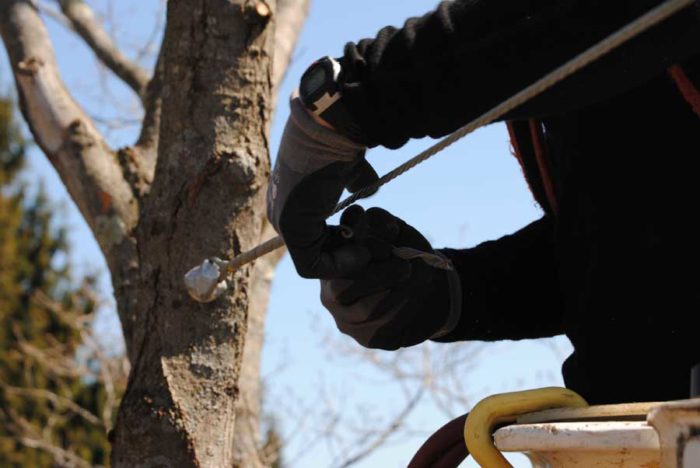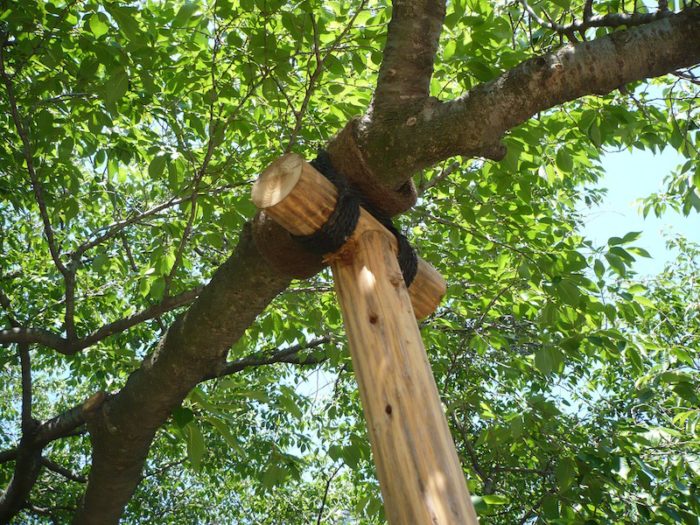The Reasons Why to Cable or Prop
Prevention - To reduce the chance of limb failure on an otherwise healthy tree that has potentially weak unions/crotches
Preservation - To preserve the existence of a damaged or weak tree for its amenity or aesthetic value
Protection - To mitigate the chance of failure in a potentially hazardous tree or one which poses a high risk (e.g. if it is located over property of a frequently populated location like a park bench or footpath)
Cabling
Sometimes trees can benefit from structural support. In cases where a tree is well suited to an area, or is planted by an ancestor, or just well-loved, cabling can hold a tree together and prevent the loss of a limb or the splitting of a double trunk. If you think a tree may need cabling, call Fir Sure Arbor Pro for a consultation with a Certified Arborist.
If you decide to install one or more cables, make sure that they are professionally installed. Sometimes the best strategy is to lightly thin the tree’s crown in conjunction with cabling.
Cables are used to support weak unions in the tree, almost always in the case of co-dominant stems (“double” trees) or a cracked branch union. The cable should be installed about two thirds of the distance from the weak union to the end of the stem.
Propping
Tree props can provide structural support for valuable trees that may be leaning or have heavy side branches. Tree props can be used to preserve trees that are in danger of failing, and to reduce risk by stabilizing trees or branches to create a safe environment and benefit the overall health of the tree.


